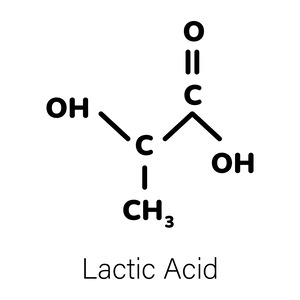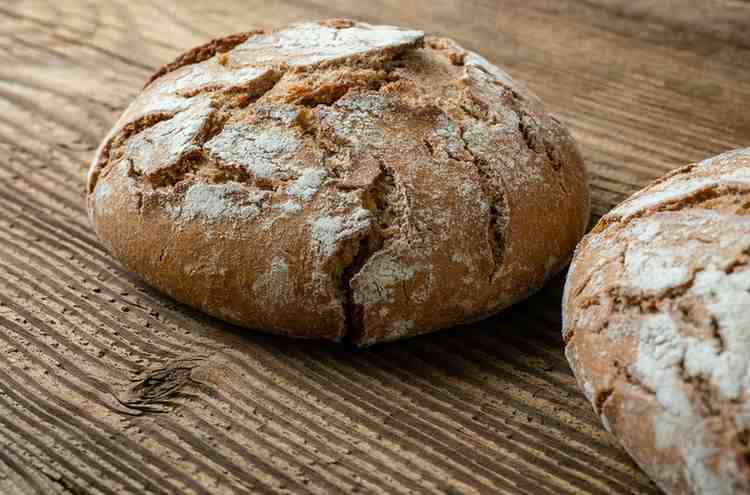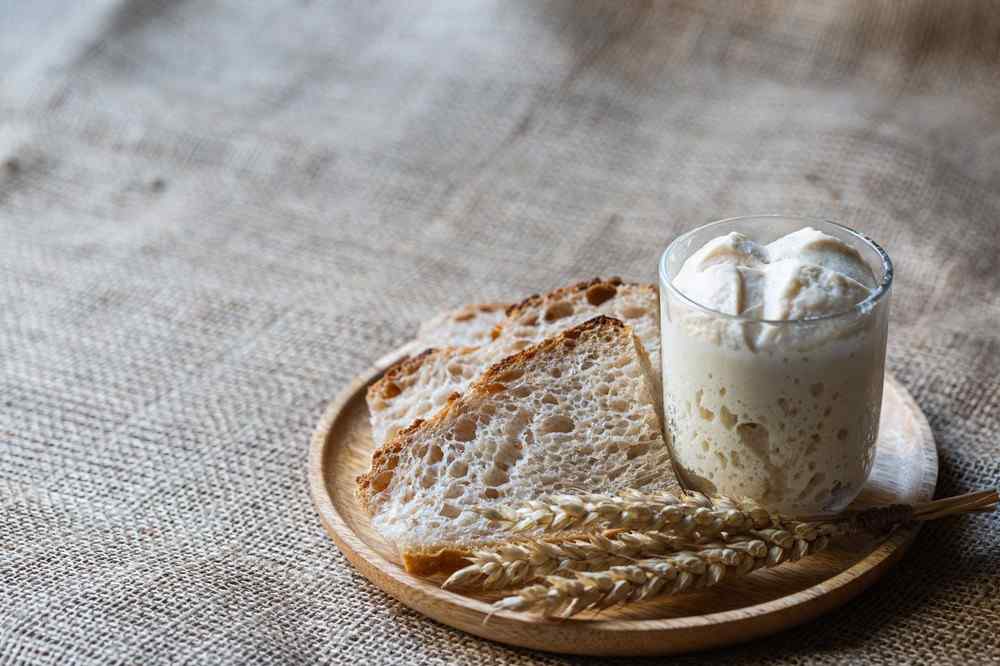Wild yeast bread, also known as sourdough, is becoming popular not only for its taste but also for its potential health benefits. This type of bread is different because it is made using wild yeast and bacteria through a natural fermentation process. It is believed to affect blood sugar levels more gently than bread made with commercial yeast.
What is Wild Yeast Bread?
Wild yeast bread is made through a long fermentation process using naturally occurring microorganisms. These include wild yeast strains such as Saccharomyces cerevisiae and lactic acid bacteria like Lactobacillus. Unlike commercial yeast, wild yeast relies on these natural agents to break down carbohydrates and proteins in the dough over a long period of time.
Key Characteristics:
- Natural fermentation: Uses wild yeast and lactic acid bacteria.
- Slow process: Takes longer than bread made with commercial yeast, which changes the bread’s nutrient profile.
- Lactic acid: Produced by the bacteria, it helps improve the bread’s digestibility and glycemic impact.
How Wild Yeast Bread Impacts Glycemic Control

Glycemic Index and Glycemic Load
- Glycemic Index (GI): This measures how fast a food raises blood glucose levels. Low-GI foods release glucose slowly, helping prevent sudden blood sugar spikes. Wild yeast bread generally has a lower GI than regular bread because of its fermentation process.
- Glycemic Load (GL): This takes into account both the glycemic index and the number of carbohydrates in a serving. It offers a fuller picture of how a food will affect blood sugar. Wild yeast bread often has a lower GL, too, because of how its starches are digested more slowly.
Benefits for Glycemic Control
There are several ways in which wild yeast bread can help people manage their blood sugar levels. Here’s how:
- Slower carbohydrate breakdown: The long fermentation process breaks down starches more completely, leading to slower glucose release into the bloodstream.
- Lactic acid reduces glucose absorption: Lactic acid, which forms during fermentation, slows down the digestion of carbohydrates, resulting in a more controlled release of sugar.
- Presence of resistant starches: Resistant starch is a type of carbohydrate that resists digestion. Wild yeast bread contains more resistant starch, which means the body absorbs fewer carbohydrates quickly.
- Improved insulin sensitivity: Some studies suggest that wild yeast bread can help improve insulin sensitivity due to the probiotics and organic acids created during fermentation.
Scientific Evidence Supporting Glycemic Benefits
Many studies have looked into how wild yeast bread affects blood sugar compared to bread made with commercial yeast. The evidence shows that wild yeast bread is better for controlling blood sugar levels.

- The 2021 study, titled “Effect of Different Fermentation Conditions on Estimated Glycemic Index, In Vitro Starch Digestibility, and Textural and Sensory Properties of Sourdough Bread“ examined how different fermentation conditions, such as time, temperature, and acidity, impact the glycemic index (GI) and starch digestibility of sourdough bread.
- Longer fermentation and higher acidity: These conditions resulted in a lower glycemic index due to reduced starch digestibility.
- Optimized fermentation: By adjusting fermentation conditions, sourdough bread can be made to release glucose more slowly, which is beneficial for those managing blood sugar levels.
- The 2019 study titled “Sourdough Fermented Breads are More Digestible than Those Started with Baker’s Yeast Alone” explored the effects of sourdough fermentation on bread digestibility and post-meal blood sugar response. Here are the key findings:
- Faster gastric emptying: Sourdough bread was digested more quickly than bread made with baker’s yeast.
- Lower glycemic response: Sourdough bread led to more stable postprandial blood sugar levels, reducing glucose spikes.
- Improved protein digestibility: Sourdough fermentation increased the digestibility of proteins and the bioavailability of essential amino acids.
Biochemical Pathways in Wild Yeast Fermentation
Wild yeast fermentation involves several biochemical processes that help reduce the glycemic impact of the bread. The table below highlights some of the key biochemical processes involved.
| Biochemical Process | Description | Effect on Glycemic Control |
|---|---|---|
| Lactic Acid Fermentation | Lactic acid bacteria break down sugars into lactic acid during fermentation. | Lactic acid lowers the bread’s pH, slowing carbohydrate digestion and resulting in a slower release of glucose into the bloodstream. |
| Amylase Enzyme Activity | Amylase enzymes break down starches into maltose, a simpler sugar. | Lactic acid production inhibits further breakdown of maltose into glucose, which reduces rapid blood sugar spikes. |
| Resistant Starch Formation | Resistant starches resist digestion in the small intestine and are fermented in the large intestine. | Resistant starches are absorbed more slowly, leading to a more gradual release of glucose into the bloodstream. |
| Phytase Enzyme Activation | Phytase enzymes break down phytic acid, which binds minerals in grains. | This improves the bioavailability of minerals like magnesium and zinc, which are important for insulin function and blood sugar regulation. |
| Acetic Acid Production | Acetic acid is formed alongside lactic acid during fermentation. | Acetic acid slows gastric emptying, which prolongs digestion and leads to a gradual rise in blood sugar after eating, thus reducing glycemic spikes. |
Health Benefits and Practical Considerations
Health Benefits Beyond Glycemic Control
Wild yeast bread offers several health advantages beyond glycemic control, thanks to its unique fermentation process. The natural fermentation not only affects how the body processes carbohydrates but also improves digestion and nutrient absorption.
Improved Digestibility and Nutrient Absorption
One of the primary benefits of wild yeast bread is its improved digestibility. The fermentation process breaks down complex carbohydrates and proteins, including gluten, making the bread easier for many people to digest.
- Gluten Breakdown: Lactic acid bacteria in the fermentation process partially degrade gluten, which may help people with mild gluten sensitivities. However, it’s important to note that it is not suitable for individuals with celiac disease.
- Phytic Acid Breakdown: Phytase enzymes activated during fermentation break down phytic acid, a compound that binds to minerals and reduces their absorption.
- Mineral Absorption: The breakdown of phytic acid allows for better absorption of essential minerals like magnesium, zinc, and iron, leading to improved nutritional intake.
In essence:
- Reduced gluten content helps with digestion.
- Better nutrient bioavailability through phytic acid reduction.
- Improved digestion overall due to lower pH from lactic acid production.
Benefits for Type 2 Diabetes and Insulin Sensitivity
Several studies suggest that wild yeast bread can be particularly beneficial for individuals with type 2 diabetes or insulin resistance. The slower digestion of carbohydrates and lower glycemic index make it a more favorable option for those managing blood sugar.
- Improved insulin sensitivity: The organic acids in sourdough, such as lactic acid, improve the body’s sensitivity to insulin, allowing for better blood sugar control.
- Reduced postprandial glucose: Wild yeast bread causes a slower and smaller rise in blood sugar after eating, which can help diabetics avoid dangerous glucose spikes.
Overall benefits include:
- Better blood sugar control due to lower glycemic response.
- Support for insulin sensitivity, making it beneficial for long-term blood sugar regulation.
How to Incorporate Wild Yeast Bread into a Glycemic-Friendly Diet
Wild yeast bread can easily be part of a balanced, glycemic-friendly diet. Here’s how you can pair it with other low-glycemic foods and even make it at home.
Pairing Wild Yeast Bread with Low-GI Foods
To maximize the blood sugar benefits, it’s helpful to pair wild yeast bread with other low-glycemic foods. This will help keep your meals balanced and prevent rapid spikes in blood sugar.
- Proteins: Pair wild yeast bread with lean proteins like eggs, chicken, or fish to slow the absorption of carbohydrates.
- Healthy Fats: Adding healthy fats such as avocado, olive oil, or nuts can help further reduce the meal’s glycemic load.
- Fiber-Rich Vegetables: Include fiber-rich, non-starchy vegetables like spinach, kale, or cucumbers to promote steady blood sugar levels.
Tips for Pairing Wild Yeast Bread with Low-GI Foods:
| Food Category | Examples | Benefits |
|---|---|---|
| Proteins | Chicken, turkey, eggs | Helps slow down carbohydrate absorption, reducing blood sugar spikes |
| Healthy Fats | Avocado, nuts, olive oil | Provides sustained energy and lowers the glycemic impact of the meal |
| Fiber-rich Vegetables | Spinach, kale, broccoli | Adds fiber to the meal, promoting slower digestion and balanced blood sugar |
Homemade Wild Yeast Bread: Recipes and Tips

Making your own wild yeast bread is a great way to ensure it fits into your glycemic-friendly diet. Here are some tips and simple steps to get started.
- Starter Creation: A wild yeast starter is the first step. Combine flour and water and let it ferment for several days, feeding it daily with fresh flour and water until it becomes bubbly and active.
- Use Whole Grains: To lower the glycemic index further, use whole grain or partially milled flours, as they contain more fiber and resistant starch.
- Longer Fermentation Time: Aim for a longer fermentation process (12-24 hours) to ensure the breakdown of more starches, which will result in lower glucose release when you eat the bread.
Steps for Homemade Wild Yeast Bread:
| Step | Description |
|---|---|
| 1. Make the Starter | Combine equal parts flour and water, feed daily until bubbly and active. |
| 2. Mix the Dough | Use the starter, flour, water, and salt to form the dough. Let it rest. |
| 3. Allow Fermentation | Let the dough ferment for 12-24 hours for better digestibility and lower GI. |
| 4. Shape and Bake | Shape the dough and bake in a preheated oven for a golden, crusty loaf. |
FAQs on Wild Yeast Bread and Glycemic Control
Is Wild Yeast Bread Better for Blood Sugar Than Regular Bread?
Yes, wild yeast bread is generally better for blood sugar management than bread made with commercial yeast. The natural fermentation process slows the digestion of carbohydrates, leading to a lower glycemic index. This helps prevent rapid spikes in blood sugar, making it a better option for individuals concerned about blood sugar regulation.
Can Wild Yeast Bread Help Manage Diabetes?
Wild yeast bread can be beneficial for people with diabetes because of its lower glycemic index. Its slow digestion and gradual glucose release help maintain steady blood sugar levels, which is important for managing diabetes. It also improves insulin sensitivity over time.
How Long Does Fermentation Need to Be to Lower the Glycemic Index?
To effectively lower the glycemic index, the dough should be fermented for at least 12 to 24 hours. Longer fermentation allows for more complete breakdown of starches, resulting in a lower glycemic response when consumed.
Can I Eat Wild Yeast Bread Daily Without Spiking Blood Sugar?
Yes, wild yeast bread can be eaten daily without significantly spiking blood sugar, especially when combined with other low-GI foods. Its slow digestion and nutrient-rich profile make it a good choice for those aiming to keep their blood sugar levels balanced.

